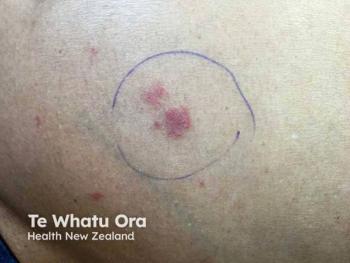
Atopic dermatitis patients’ access to care varies across US
For patients with atopic dermatitis, access to dermatology care appears to be best in the West and poorest in the Midwest, shows a recent study looking at disparities in access to services across the United States.
For patients with atopic dermatitis, access to dermatology care appears to be best in the West and poorest in the Midwest,
Regular outpatient dermatology care is important for the management of atopic dermatitis as it can help prevent flares, which can require a patient to go to the emergency department.2 A variety of factors may impact access to ambulatory care for a patient with atopic dermatitis, including race, ethnicity, socioeconomic status and geographical location.
“There is a critical gap in the knowledge regarding the geographic differences in healthcare resource use and cost of atopic dermatitis in the US,” writes study author April Armstrong, M.D. professor of dermatology and associate dean for clinical research at Keck School of Medicine, University of Southern California, Los Angeles. “Determining these differences enables clinicians and policy makers to implement interventions and policies directed at improving access to care.”
Using data for 1996 to 2015 from the Medical Expenditure Panel Survey (MEPS) database, a nationally representative survey of U.S. households administered by the Agency of Healthcare Research and Quality (AHRQ), Armstrong and colleagues quantified healthcare resource use (number of healthcare visits and medications provided to the patient) and the cost for atopic dermatitis patients in four census regions of the U.S.: West, South, Midwest, and Northeast.
In total, data on 6,348,578 atopic dermatitis were included. Across the entire U.S., the mean total healthcare costs per atopic dermatitis patient per year was $263. Patients made a mean of 0.71 ambulatory visits per year representing a cost of $121 per patient, and received a mean of 0.98 prescriptions per year, representing a cost of $76 per patient. Every year a mean of 4.8% patients made at least one visit to the emergency department for their atopic dermatitis which represented an average annual cost on average of $683 per patient per year for those attending.
However, when the data was broken down regionally, it was clear that patients in the Midwest had far fewer ambulatory visits per patient per year (0.55 visits) and were far more likely to visit the emergency room (7.1% of patients) than those in other regions.
In comparison, only 1.4% of patients in the West attended the emergency room at least once per year. In the Northeast it was 4.8% ,and in the South it was 5.4%.
More detailed analysis of data on patients in the Midwest revealed that patients who made no ambulatory visits per year made nearly three times more emergency department visits than those who had a least one per year.
“In regard to healthcare resource use, the most ideal region for atopic dermatitis patients to access care appears to be the West,” Dr. Armstrong writes. “These results suggest that atopic dermatitis patients in the West have better access to ambulatory care, which may have resulted in better disease control. Better disease control is one possible reason why Western atopic dermatitis patients used the fewest emergency department resources.”
In contrast, the least ideal region for atopic patients to access care appears to be the Midwest, she adds. “These results suggest that Midwestern AD patients have markedly poor access to ambulatory resources, which may have resulted in greater flare frequency and emergency department use.”
An analysis of the American Association of Dermatology’s membership database found that the Midwest is the only census region in the U.S. with a net export of new dermatologists,3 which goes some way to explain the difficulty accessing dermatology services there.
Surprisingly, despite differences in healthcare resource use, there were no statistically significant differences in total healthcare cost per patient per year when individual regions were compared with the remainder of the country.
“This observation holds contrary to the belief that regular ambulatory care reduces cost in those with atopic dermatitis and that high emergency department use leads to an overall greater financial burden,” Dr. Armstrong writes. But she cautions that similar healthcare costs does not necessarily mean that healthcare quality or patient outcomes are similar across the regions.
“High emergency department use is a marker for greater disease severity in those with atopic dermatitis. Therefore, it remains important to ensure atopic dermatitis patients receive regular ambulatory care to prevent flares and reduce the burden on limited emergency department resources.”
To address the disparity in service provision, Dr. Armstrong suggests that financial incentives could be offered to dermatologists and primary care physicians providing care for atopic dermatitis patients to recruit them to underserved areas. State-sponsored student loan forgiveness programs have been found to be effective in attracting primary care practitioners to practice in underserved regions of the U.S., and such programs could be extended to dermatology practitioners.4
“Our results suggest that the Midwest may benefit the most from such recruitment efforts,” Dr. Armstrong writes.
Using teledermatology to provide dermatologic care remotely might also be an option,5 she adds.
Newsletter
Like what you’re reading? Subscribe to Dermatology Times for weekly updates on therapies, innovations, and real-world practice tips.


















